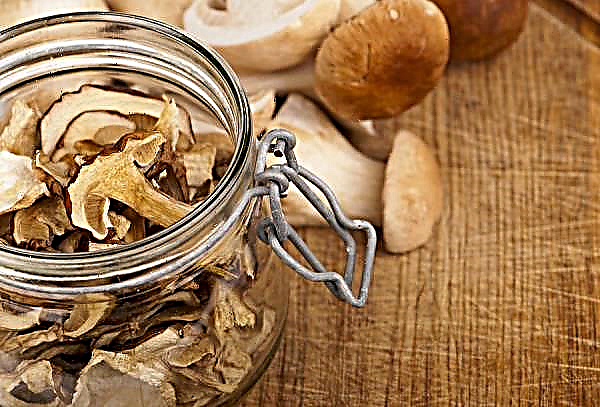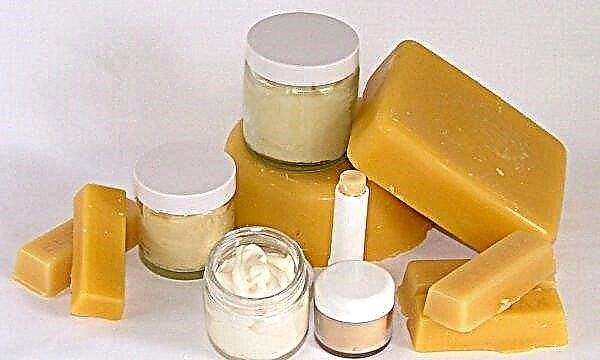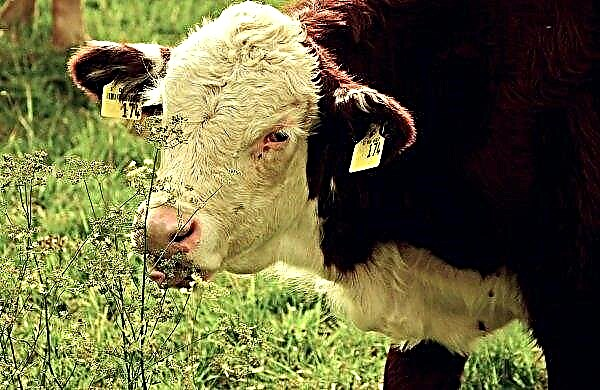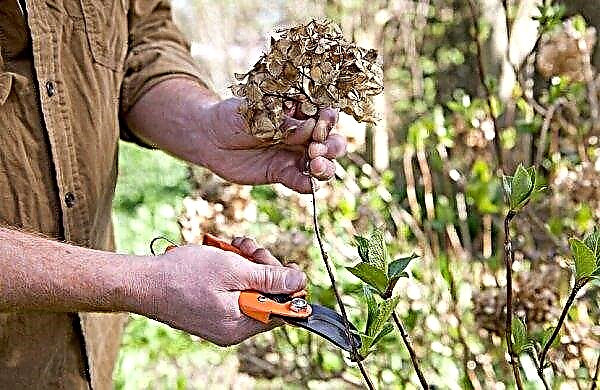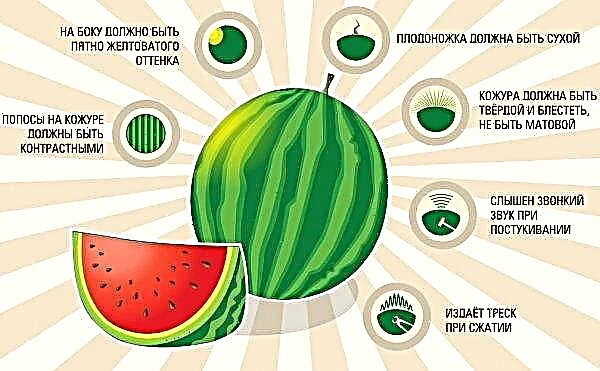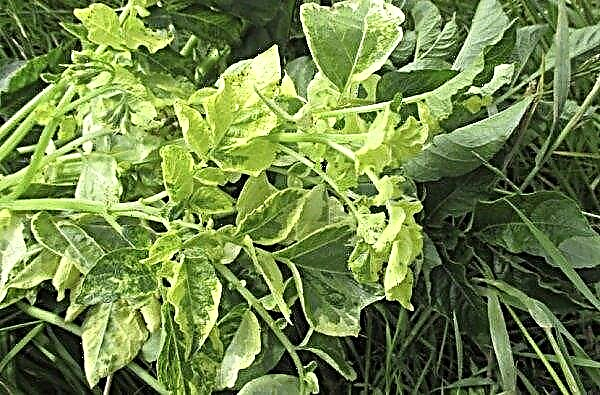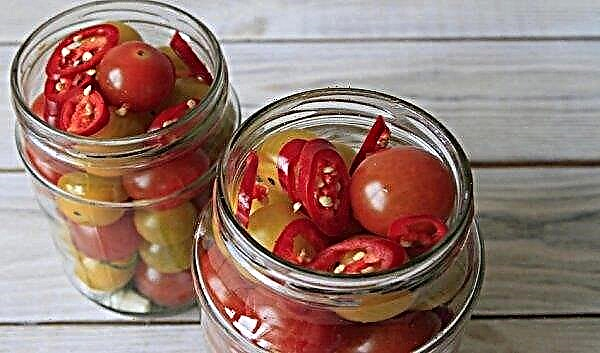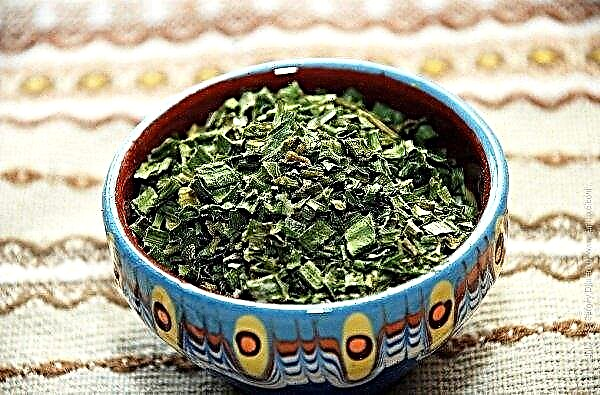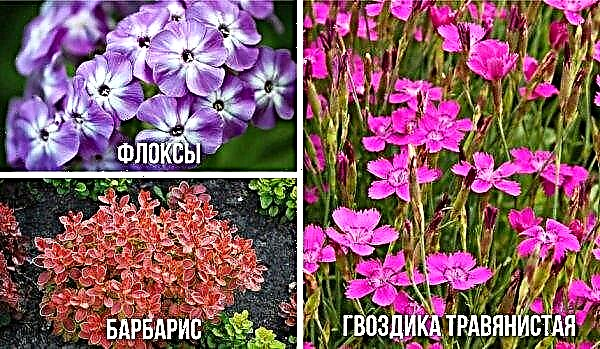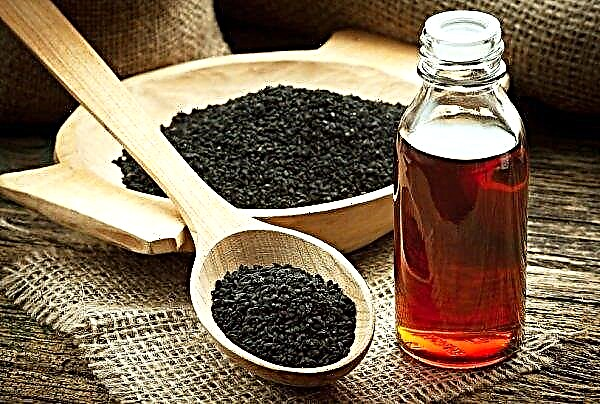Dill color change is observed due to adverse environmental influences. It is possible to avoid dryness and twisting of leaves if the plant is provided with the most favorable conditions. Find out how best to do it.
Dill turned yellow: why and what to do
Most often, dill spoils due to improper care, but it also happens that the gardener follows all the rules of agricultural technology, but the dill greens still curl and dry. In this case, it is necessary to carefully examine the culture for the appearance of parasites.
Also, the reason that the dill twists may be a dense landing or lack of moisture. In addition, the cause of yellowing of the plant is often the poverty or high acidity of the soil.
Important! If you notice that the leaves are light, then do not rush to treat the plant. Sometimes lightening leaves is associated with the characteristics of the variety.
All these indicators can cause a change in the color of greenery and lead to a slowdown in its growth.
Excessive watering
Often, gardeners at the sight of drooping stems begin intensified watering of the plant, believing that the cause may be a lack of moisture. Sometimes this is the right decision, but often the gardener can overdo it and do even more harm. In this case, excessive watering contributes to the formation of rot on the roots.
If the situation does not change for a long time, this can lead to yellowing or reddening of the greenery, and eventually the stem will completely dry out. It is important to ensure that the soil is moist, not marshy and dense.
Watering the crop is necessary only with warm water, not more than 3 times in 7 days. But if the street keeps heat and drought, then watering can be done daily.
It is also recommended that fertilizers be added to irrigation water from time to time. This will help prevent the appearance of aphids and give the plant the opportunity to grow better.
Oversupply of the sun
The scorching sun can lead to burns on the leaves and their dryness, because of which the plant can turn yellow, so it is worth sowing dill in a slightly shaded area. At the same time, it is necessary to ensure that the plant grows most of the daylight in the sun, otherwise the stems may become weak, and the green will change its color.
Did you know? In ancient Rome and Greece, it was customary to give dill bouquets to their chosen ones as a sign of sympathy. And in addition to the laurel wreath, the competition leaders were also awarded dill.
It is undesirable to place the culture under tall bushes and dense trees - it is better to choose a sunny place, but not completely open. In addition, burnt and dry dill becomes useless, since it completely loses its qualities.
Soil acidity
Acidic soil is destructive for this culture - with it, plants germinate amicably and abundantly, but do not grow and release leaves for a long time. As a result, the green grows smaller and grows inconspicuous. It happens that plants do not grow at all for a very long time, and when they become even a little larger, they change their color to red or lilac.
To take measures in advance, you must first determine the level of acidity in the soil. To do this, you can purchase a special indicator in the store. It is sold in the form of paper strips, which are immersed in the soil to a depth of dill growth (about 10 cm).
The paper should lie until it is saturated with moisture. As a result, the indicator changes color, by which it is possible to understand the acidity of the soil, according to the instructions. Typically, the packaging indicates the usual scale, according to which an indicator from 6.5 to 7.5 units is considered the most favorable.
In case of adverse acidity - it is better to refrain from sowing dill in this place.
In addition, you can observe what is growing in the garden. If there is a lot of horsetail or biting midges on the territory, this is a sure sign of acid soil.
If you do not want or are not able to provide dill with other soil, the situation can be corrected by top dressing.
Important! It is not necessary to use the ash in any manipulations with dill, it is better to use crushed eggshells. The particle size should not exceed 1 mm, otherwise the acidity will not change soon.
To do this:
- make tincture from compost, brought to the state of slurry, and water the soil;
- add dolomite flour or lime dust to the soil, then dig a bed;
- enrich the earth with humus or humus, which will help change soil composition over time.

Thickened landing
If you sow dill too thick, this can lead to impaired growth. In this case, the stems are thin and weak.
From crowding in the garden, plants may turn yellow. This happens due to the fact that the plants close each other's light and the culture may die. To prevent this from happening, gardeners advise thinning the garden so that 1-2 cm of free space is left between the plants.
The thinning procedure must be repeated periodically, as the greenery grows, in order to increase this gap. As a result, only those plants from which you plan to collect seeds in the future should be left in the garden.
Lack of nutrients
Low soil fertility can lead to yellowing and drying of dill. To fix this, you can add organic fertilizer to the soil in the spring and dig a bed. It is also possible to enrich the soil with mineral fertilizers, but this procedure must be carried out in the fall.
In order for the greenery to grow and delight the crops, it must be fertilized. You can pour humus, for this you need to breed half a bucket of humus with the same amount of water. The solution is enough for 1 m² of beds. Instead of humus, you can use mullein.
With top dressing, you need to be careful, because due to its excess, the stems can become brittle and begin to fall under the weight of the inflorescences. For example: from what else you can feed dill, rotten manure is a good tool, but you can’t take fresh, otherwise the plant will quickly grow and give lush greenery that a thin stalk can not withstand. You need to be careful with nitrogen supplementation. Oversaturation with this fertilizer contributes to the appearance of aphids on the leaves.
You need to be careful with nitrogen supplementation. Oversaturation with this fertilizer contributes to the appearance of aphids on the leaves.
Do not get involved in chemical fertilizers and growth stimulants. The plant is able to accumulate nitrates in the leaves, due to which it loses its smell and taste. For a person, such greenery is only harmful.
Did you know? In the Middle Ages, dill was grown as an ornamental plant. In addition, it was believed that this plant is able to protect against damage and witchcraft.
The presence of pests
The most common diseases of the culture are powdery mildew, peronosporosis, blackleg and phomosis. If you notice that the greens began to change color and rot, you must immediately take action.
An effective and universal means of pest control can be a solution of potassium permanganate and a soap solution with soda.
The most frequent guest in dill is the aphid, which can be prevented by planting greenery in the open and planting marigolds, chamomile, or mallow around the perimeter. The aromas of these colors scare away the insect.
Nettle infusion, which is prepared for 5 days, also helps aphids. Once a week, you can water them in the garden. The smell of this plant will be transmitted to dill and scare off the parasites.
Dill, affected by root rot, must be removed immediately - such a plant can not be saved. To prevent this, it is necessary to loosen the soil and thin out the plants. This is required so that the roots are saturated with oxygen.
Preventative measures
To prevent discoloration of leaves on dill, experienced gardeners recommend that you adhere to the following rules:
- Proper soil preparation. The structure of the soil should resemble sandy loam or loam - for this peat is added to the soil, which can still be replaced with coarse sand.
- Determination and normalization of soil acidity before sowing.
- Compliance with agricultural techniques of sowing and regular feeding.
- Proper sowing of seeds and thinning so that the plants are at a distance of 2-5 cm from each other. Also on bush varieties you need to pick off the lower leaves.
- Timely and sufficient watering, which should be carried out only with warm water.
- To strengthen the immunity of plants, you can treat them with preparations "Baikal EM-1" and "Shine."
In the case when the plants are already affected by diseases, biofungicides must be used for treatment. These products are the most environmentally friendly and do not harm either the plant or the person. 2 days after spraying, greens can be consumed.
The same means can be used to treat the soil, which is done 2 weeks before sowing seeds. Then, every 14 days, dill is watered with these drugs, as they kill harmful microorganisms and strengthen the culture.
Is it possible to eat yellowed dill
Yellow, sluggish and dried dill is not a health hazard, but it should not be eaten, since the greens will not have any taste or aroma. During the deformation of the plant, moisture leaves it, which leads to a loss of taste and healthy qualities. You also need to be careful when buying greens in a store - damaged branches can be hidden inside the bundle, so you need to inspect such a product very carefully. It is better to take the goods without packaging.
You also need to be careful when buying greens in a store - damaged branches can be hidden inside the bundle, so you need to inspect such a product very carefully. It is better to take the goods without packaging.
In addition, if you know that the culture is damaged by parasites, it is better to immediately get rid of such greens. In no case should you eat it, otherwise the use of such dill in food can cause indigestion and poisoning.
Some gardeners treat dill as a weed, which itself is planted and grows on their site even without much effort in caring for the plant. And in many cases, on the contrary, the gardener has to work long and hard to get a crop of this green.
Often the cause of problems with growing dill are errors in the care of the crop. In any case, it is necessary to select a variety of dill that will maximally correspond to the climate and soil composition, and also make sure that the plant grows in favorable conditions for it.

